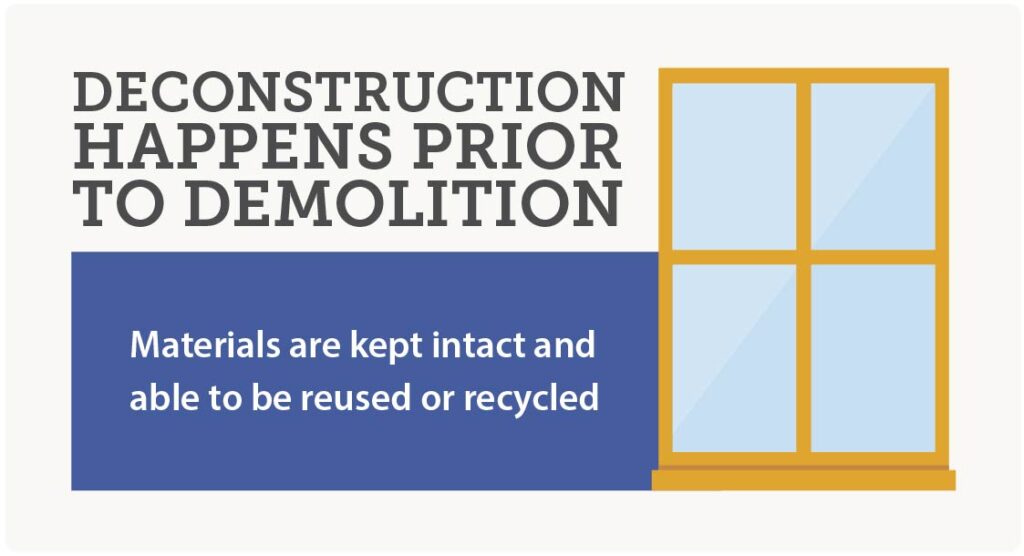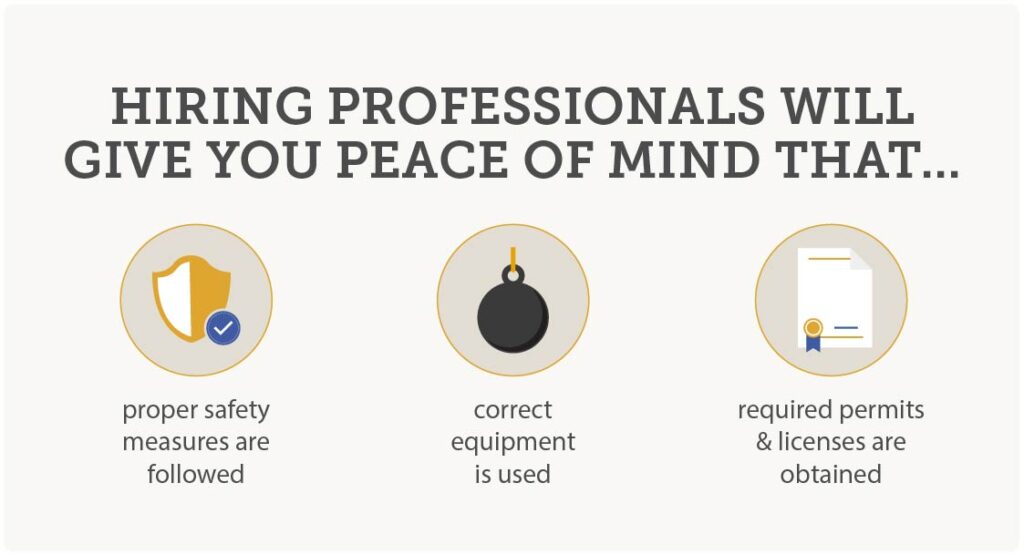Frequently Asked Questions About Commercial Demolition
1. What is commercial demolition?
This type of demolition is unique in a few different ways.
First of all, commercial demolition specifically refers to the dismantlement of commercial properties, like the ones we mentioned above. Any other type of building (such as a house or an apartment complex) falls under the category of residential demolition and necessitates a different approach.
Secondly, commercial demolition requires the services of a company that is highly skilled in using the specialty equipment required for the job. Equipment includes high-reach excavators, cranes, bulldozers, and more.
2. Is there a difference between demolition and deconstruction?
Yes – demolition and deconstruction are two different things.

Deconstruction is something that happens prior to demolition. It includes systematically and carefully taking apart the building, so materials are kept intact and able to be reused or recycled.
The materials from the deconstruction can be reused or sold with the help of asset recovery services, like those offered at Elder Demolition.
3. What does the demolition process look like?
Demolition is complex and involves a lot of crucial steps. A demolition company will go through the following steps to complete your project:
Step 1: Perform a run-through of the building to see if there are any materials that can be removed prior to demolition.
Step 2: Clear everything out of the commercial building.
Step 3: Do a safety check to determine if there are any potential hazards, such as asbestos or other toxic chemicals.
Step 4: Create a plan for the specific kind of demolition your project requires.
Step 5: Safely prep the building, the surrounding area, and the demolition crew for the demo.
Step 6: Demolish the building.
Step 7: Bring in a team for asset recovery to recycle and salvage eligible materials.
This is a general overview of a commercial demolition process. It’s important to note that the specifics will vary depending on the contractor’s assessment and the unique structure of the building.
4. Why is it important to remove asbestos prior to demolition?
Safety is a vital part of a commercial demolition project. To ensure safety, contractors must check for asbestos, a dangerous mineral that poses severe health risks. If asbestos fibers are breathed in, they have the potential to get trapped in the lungs. This can lead to issues such as scarring, inflammation, breathing issues, and even cancer.
Demolition services should always include the inspection of the building for asbestos. If asbestos is found, your demolition contractor should ensure that it is properly removed to maintain the highest level of safety.
5. Should I hire a commercial demolition contractor?
Because of all the planning, equipment, and safety steps that are required, it’s imperative to hire a commercial demolition contractor to see your project through from start to finish.

Hiring professionals will give you peace of mind that proper safety measures are followed, the correct equipment is used, and required permits and licensing have been granted.
6. How do I find the right commercial demolition contractor?
When it comes to something like demolition, experience is key. The best contractors are those who come with years of experience and glowing reviews from previous clients. Elder Demolition has decades of experience, and commercial demolition is one of our specialties.
We live up to our reputation as a respected leader in our industry every day by providing clients with comprehensive services that make the demolition process stress-free
7. Is commercial demolition bad for the environment?
One of the most important parts of choosing a commercial demolition company is finding the one that prioritizes sustainable practices.
Elder Demolition has adapted procedures over the years to practice better environmental stewardship. This ensures the effect on the environment is as minimal as possible.
Here are some of the environmental stewardship practices we apply to our jobs:
- Recycling as much debris as possible rather than taking it to a landfill
- Removing hazardous materials and returning the site to a natural state
- Salvaging architectural components for reuse and sale
